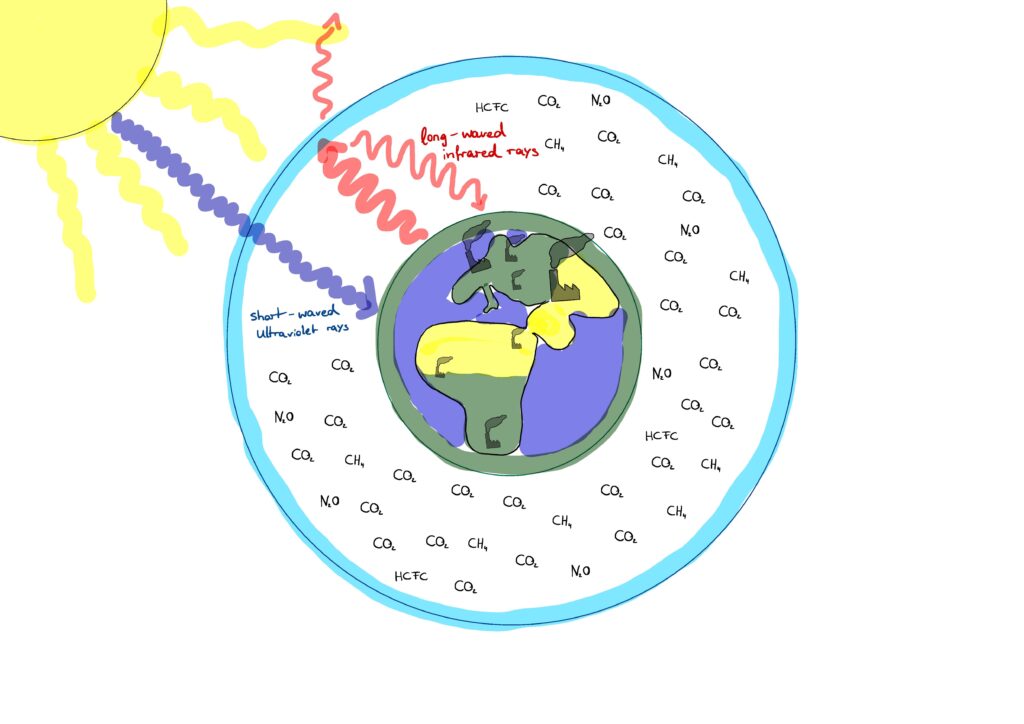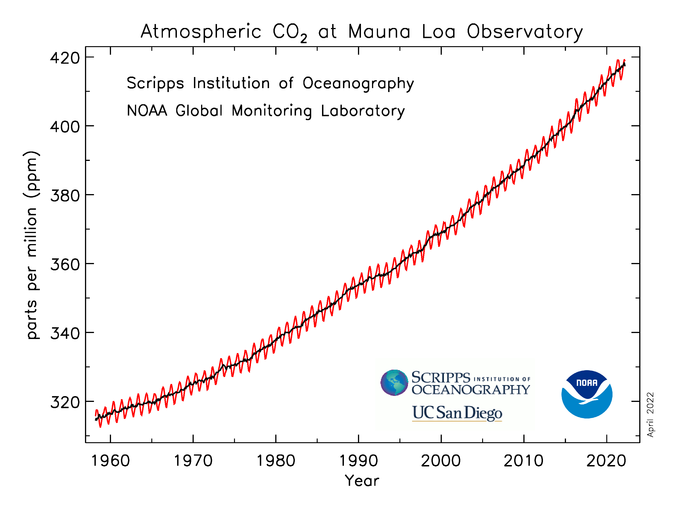Climate protection must become an essential part of our lives. We must encounter it day and night, at work, at school, at university or at home. We must live climate protection and involve and convince other people. Protecting the climate is probably the biggest task humanity will ever have. That is exactly why I would like to talk about the climate here, explaining how the so-called greenhouse effect comes about, what our climate is like, why we need to protect the climate and what we can do ourselves.
Table of Contents
- How does the greenhouse effect come about?
- Is it proven that humans are causing climate change?
- Why do we have to protect the climate?
- What can we do?
- Sources
- Posts on climate
How does the greenhouse effect come about?
The greenhouse effect is a natural effect in the Earth’s atmosphere that reflects heat radiation back to the Earth and thus increases the temperature on Earth. The natural greenhouse effect even ensures that temperatures prevail on Earth that are necessary for the development of life as we know it. Without the greenhouse effect, we would not even exist, because the temperatures would be around -19.2°C [1].

Certain gases in our atmosphere – called greenhouse gases – have the property of transmitting the high-energy, long-wave radiation emitted by the sun, but to partially reflect the less energetic long-wave radiation emitted by the earth, so that this radiation hits the earth again and warms it up.
Which greenhouse gases exist?
There are many different greenhouse gases. The most common greenhouse gas in the atmosphere (after water vapour) is carbon dioxide (CO2). Therefore, the effectiveness of greenhouse gases is usually measured in CO2-equivalents (CO2-e). CO2 is largely produced by burning carbon-containing material (e.g. petrol, crude oil, plastics and natural gas, but also wood and other organic material). Methane (CH4) is produced in fermentation processes (e.g. in the stomachs of cows or in biogas plants). Methane is a much more active greenhouse gas than CO2 (about 28 times stronger in relation to 100 years), which is why its activity as a greenhouse gas is given as 28 CO2-e. Nitrous oxide (N2O) is about 265 times more active than CO2, and CFC gases, formerly used in refrigerators, air conditioners and as propellants for spray cans, are even several thousand times more active (~4660 times), according to the IPCC.
Why is no one talking about water vapour as a greenhouse gas?
Water vapour is the gas that contributes most to the greenhouse effect and its effect varies greatly, but water vapour is thought to contribute about 60% (varying between 1% and 89%) to climate change [1]. By comparison, CO2 contributes about 25% to the greenhouse effect. However, most of the water vapour comes from natural sources and only little is anthropogenic (i.e. caused by humans). Anthropogenic sources are, for example, direct evaporation or the increased natural absorption capacity of the atmosphere due to global warming [1].
The anthropogenic greenhouse effect
While the greenhouse effect is partly natural, climate change is human-induced, as humans produce and release large amounts of greenhouse gases into the atmosphere. With the increased concentration of greenhouse gases in the atmosphere, we increase the temperature on Earth through the principle explained above, leading to problems such as melting glaciers and polar ice caps, rising sea levels, droughts, as well as storms and other natural disasters.
Is it proven that humans are causing climate change?
Yes and no; it is not proven, because it is impossible to prove. However, all the evidence points to it. The atmosphere has increasing concentrations of gases that we know support the greenhouse effect. Some of these gases do not occur naturally, so they must be of anthropogenic origin. And greenhouse gas concentrations are significantly higher than at any time in the last 800,000 years (data can be collected from ice cores).

More precise measurements have been taken since 1958 by the NOAA measuring station on Mauna Loa in Hawai’i. The measurements fluctuate periodically with the vegetation curve and form the following pattern:

Alltogether, all the evidence points to the fact that climate change is to a significant extent caused by humans.
You can take a closer look at the development of CO2 concentrations (also worldwide) here:
Why do we have to protect the climate?
What can we do?
Live sustainably.
Sources
[1] M. A. Gusakova, L. N. Karlin (2013). Assessment of Contribution of Greenhouse Gases, Water Vapor, and Cloudiness to the Variations of Global Surface Air Temperature
Posts on climate
Clouds
“Have you ever thought about clouds?” A cloud is a formation of watermolecules around a condensation nucleus. Condensation nuclei can either be a kind of air pollution or ionized natural molecules. As a cloud develops around its nucleus it grows till it is so big that we are able to see them in the sky.…
Read more

